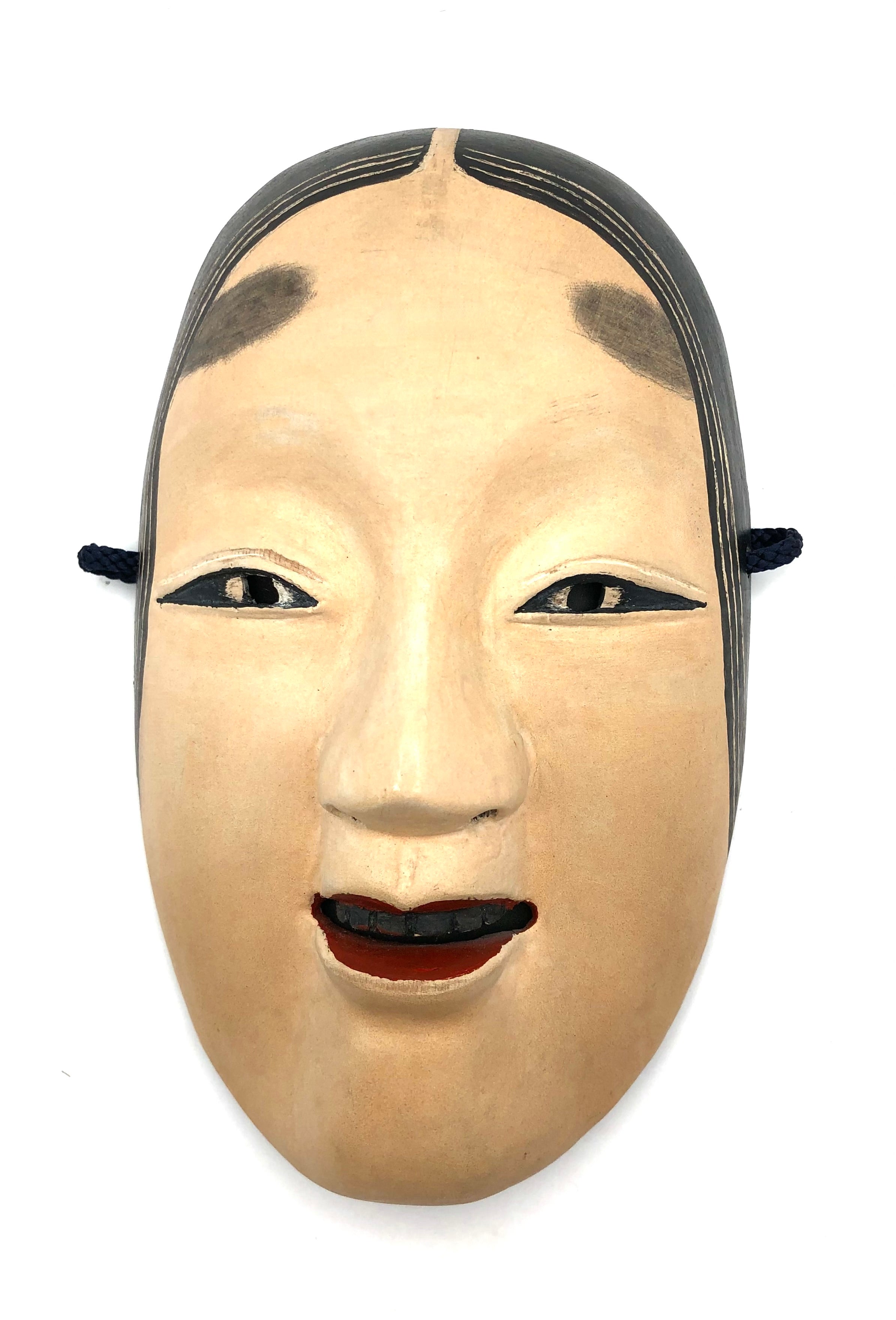
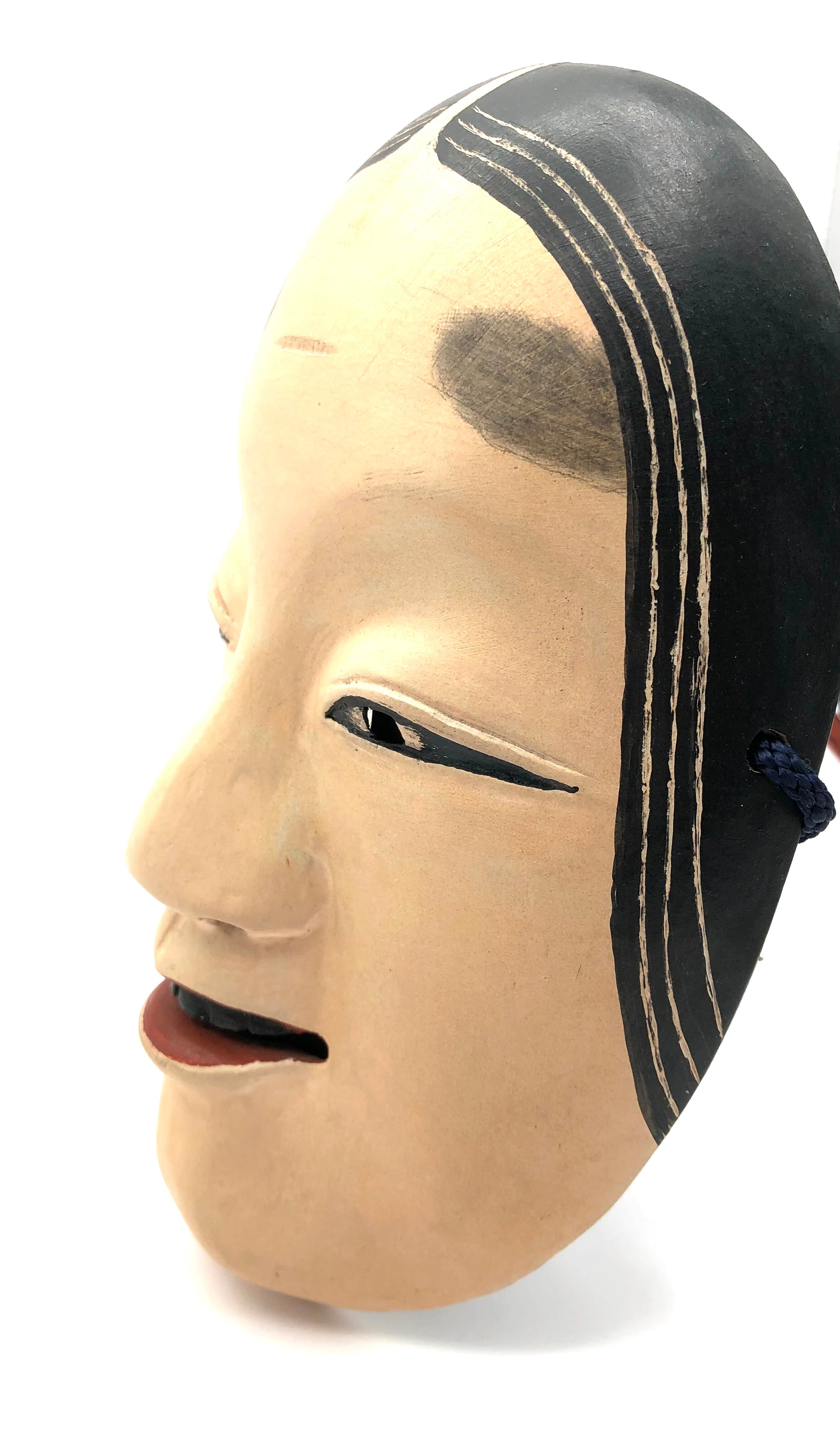
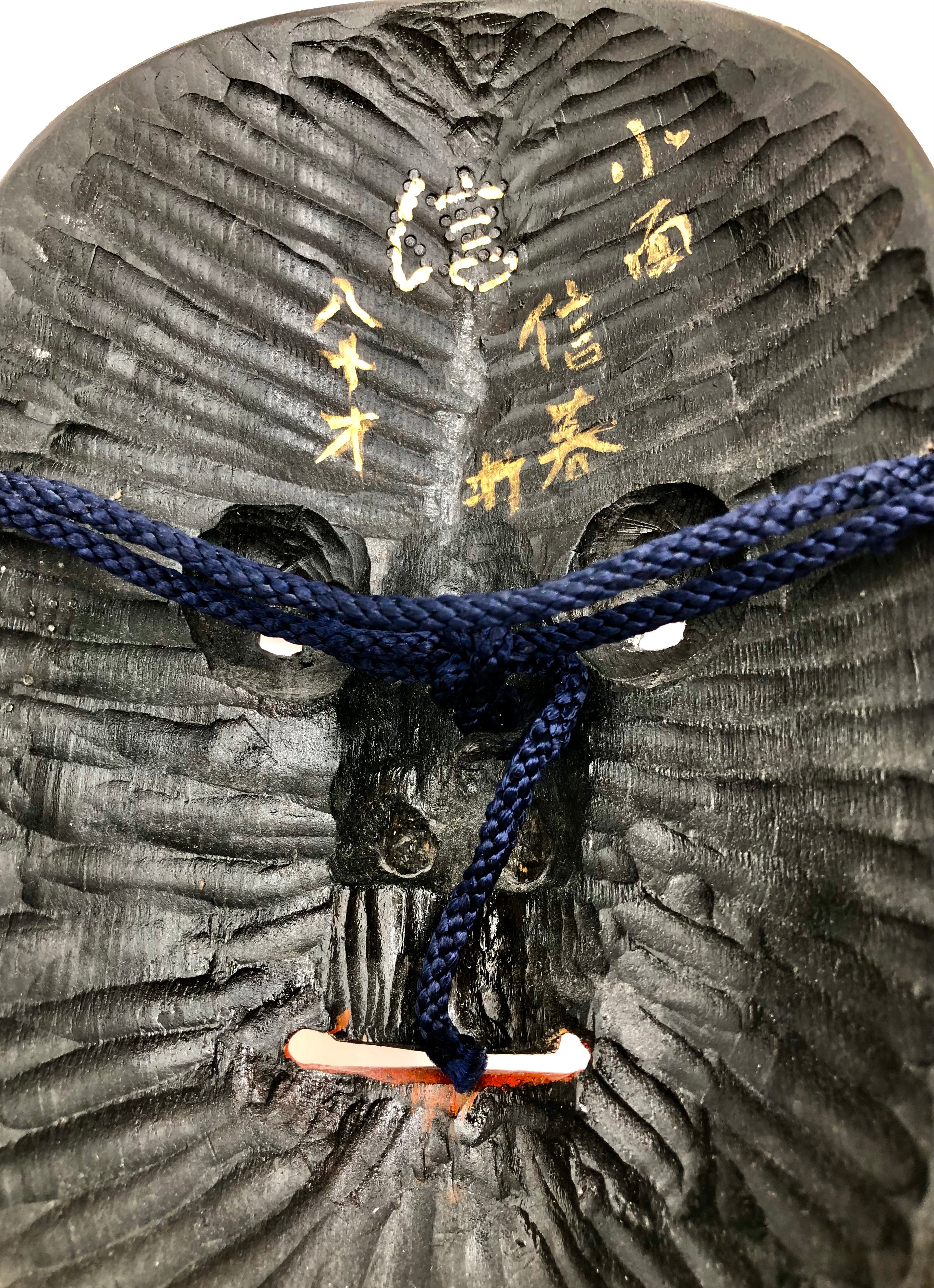
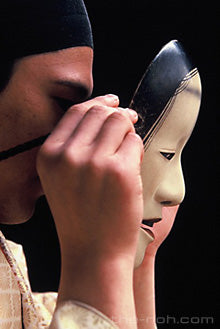
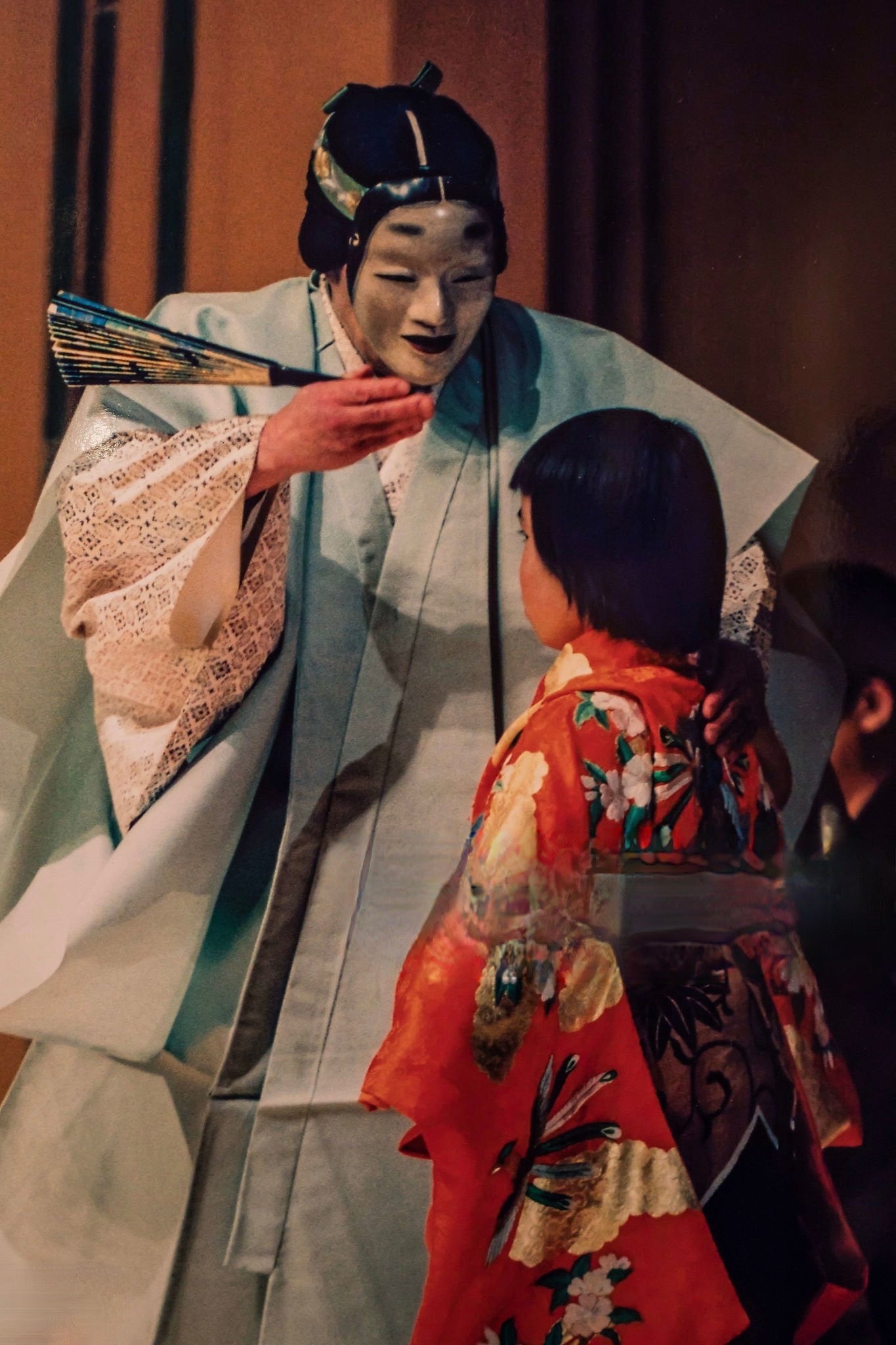
Vintage Japanese Noh Mask Lacquered Wood Carving: Ko-omoto Young Girl | Traditional Omen by Oiwa, Hirosho
Dimensions: 8-0"l x 5-1/2"w
Covering the face with a mask is much like wearing makeup. However, noh performers feel that the noh mask has a certain power inherent in it which makes it much more spiritual than a prop used to change one's appearance.
This mask is called Koomote and represents the face of a girl who has abandoned her innocence with a slight childish smile. This mask is worn in two ways: forward giving a serene appearance or in the terasu position, (tilting upwards), in which the mask appears slightly smiling or laughing and the expression lightens. The mask is a character from traditional Noh and other Japanese dramas. The mask is the traditional cream color with black hair that is pulled back from the face. Her eyes (the holes in the mask) are very small are wonderfully detailed, and she has red lipstick and black teeth. The piece is signed and detailed in gold on the back.
Evolving under shogunate patronage Noh theatre became an exclusive samurai pastime from the 14th century through the present day. Performed by male actors wearing masks, Noh dramas fall into five categories, plays about gods, women, insanity, revenge, and demons. Noh features lavish silk brocade costumes and exquisitely fashioned wooden masks. The masks are designed and crafted with great subtlety. They can appear to dramatically transform simply from the alterations of light and shadow as the actors move their heads to deliver great dramatic power.
Antique and Vintage Noh masks such as the mask being offered are carved from a single piece of wood painted with natural pigments. The mask represents the age, gender, and social ranking of human or nonhuman beings like animals, demons, or divine creatures. The Noh mask is used to emphasize and stylize the facial expressions which are accompanied by adequate body language and movement.
Noh theatre: Noh theater involves music, dance, and drama, and themes are structured around song and dance. Movements are slow, the tone is monotonous though the language is poetic and the costumes are rich and elaborate. Plots are usually drawn from legend, history, literature, and contemporary events. During the Tokugawa Period, the shogunate made noh its official ceremonial art and issued regulations for its governance. Noh thus became more standardized with an emphasis on tradition rather than innovation. Noh is performed on a square stage with all sides of the stage open, except for the back side which consists of a wall with a painted image of a pine tree. One key element of Noh is the masks that tell the audience what character is being portrayed, a young girl (Ko-omoto).
Condition: Excellent with slight grit from use and aging, with no surface imperfections. As originally made.
